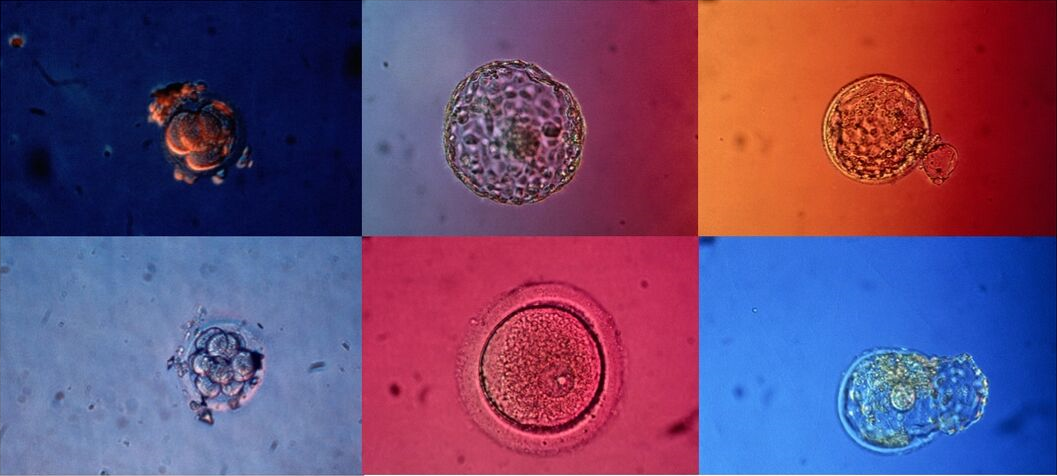The early summer conference season has been quite eventful for us. We had the pleasure of presenting some of our initial findings at two events: the British Sociological Association’s (BSA) Human Reproduction Study Group Annual Conference on May 24 and Visualising Reproduction on June 4. Although both took place in Leicester at De Montfort University, they each took a unique and innovative angle on issues emerging in reproduction studies. I here reflect not only on our project’s fit within larger conversations on assisted reproduction, but also on the impressive breadth of topics covered at these two conferences.
Reproduction and the Law
With a very timely choice of topic, the BSA event highlighted critical intersections between reproduction and the law. Coupled with the anticipation of the Irish referendum, I was reminded that the law plays a crucial role in determining our reproductive choices. As someone who has only recently moved to the UK, Professor Emily Jackson’s plenary talk was particularly eye-opening with regards to the legal work that still needs to be done here in order to improve women’s choices. Of course, improvements are necessary everywhere, but the UK has its peculiarities and unique challenges. Most notably, the country has a 10 year storage limit on eggs frozen for social reasons, thus not always allowing women sufficient time to use them to conceive. (An online petition you can sign to change this is in place at https://petition.parliament.uk/petitions/218313) I was also intrigued to find about the various barriers women face as a result of the 1967 Abortion Act. Unquestionably, it is time to change regulations to improve access. Professor Jackson’s talk was an important reminder that we can and should push further.
The presentations I attended throughout the day allowed me to reflect on how we might best regulate gamete donation, surrogacy, and egg freezing, to name just a few topics that came up. The range of global contexts (including North America, Europe and Asia) that presenters explored was impressive and highlighted how ethical challenges are influenced by national policies. In particular, economic inequalities have affected assisted reproduction practices, as governments often fail to keep up with such the changing landscape of assisted reproductive technologies. The regulations required to protect those who are vulnerable, such as surrogates and gamete donors who are based in lower-income countries, are either flawed or non-existent. The BSA event provided a vital space for discussions on how we might proceed. Even though many of us are unsure of the best course of action, starting these conversations is definitely a promising start.
Presenting on Time-lapse
The use of imaging technologies in IVF has been itself caught up in larger debates on commercialisation and best course of treatment. I tried to capture the contentious place that such technologies occupy today in the world of IVF during our presentation at the BSA event. Views on time-lapse have changed tremendously even during the course of our research.
The two conferences we attended perfectly capture the debates/conversations that time-lapse is part of. On one hand, it is a contested technology that potentially calls for more regulatory action in the UK. On the other hand, it captures imaginations with its ability to give us unprecedented insights into the life of embryos. This second aspect brings me to the visual of reproduction and how this was explored during the Visualising Reproduction event.
Visualising Reproduction

With topics ranging from the history of embryo illustrations to menstruation in the visual arts to holographic visualisations of the clitoris, Visualizing Reproduction was fascinating, unique, and much-needed conference that showcased the significance of reproductive imagery. Listening to the invited speakers (including our very own Manuela Perrotta), I realised that many topics we study in the social sciences are intricately related to art and visualisation. In particular, the conference highlighted collaborations between artists and academics. This stood out me as interdisciplinarity at its best. For example, Isabel Davis from Birkbeck and artist Anna Burel talked about the Experimental Conception Hospital imagined by Robert Lyall, a 19th century physician. Anna’s illustrations of pregnant women and art pieces made Lyall’s imagined institution come to life. Another example of amazing work from artists was Liv Pennington’s exploration of pregnancy tests – a technology so mundane yet at the same time so mysterious. Thinking about such work, it strikes me that the visual has the power to break down taboos and barriers, as also exemplified in representations of menstruation in the arts – a topic that Camilla Røstvik brilliantly covered in her presentation.
Visual Representations has taught us that fruitful collaborations between artists and academics might be able to provide a better-rounded picture of the topic studied. It has also taught us that we need to further emphasize the visual in our project’s exploration of time-lapse and its uses.

 During the second week of May the Bush Theatre in London hosted
During the second week of May the Bush Theatre in London hosted  Another highlight of the day was the ‘Fertility Fight Club’, where four speakers had ten minutes to talk – honestly and provocatively – about ‘what makes you angry’.
Another highlight of the day was the ‘Fertility Fight Club’, where four speakers had ten minutes to talk – honestly and provocatively – about ‘what makes you angry’.